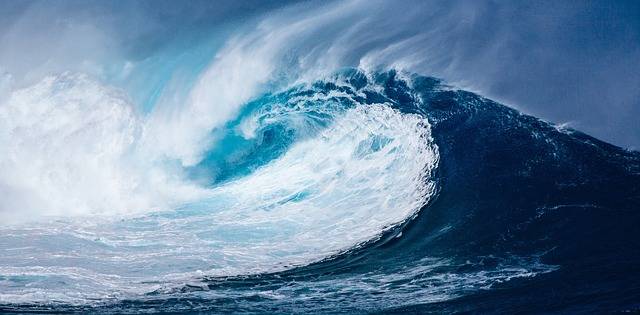The last two editions of Sector Watch have looked into policy developments and practice examples to deal with what some have termed the plastic waste crisis. But oceans do not respect country borders and plastic pollution is a global issue.
While Europeans are amongst the biggest plastic waste generators on the planet, in 2010, Europe and Central Asia combined only contributed 3,6% to global marine plastic litter. This is thanks to comparatively well managed waste disposal.
But 79% of global plastic is still accumulated in landfills or the environment, including the oceans.
And Europe is not exempt from responsibility in tackling the global marine litter problem. It hit the news last year when China refused to accept any more plastic waste exports: After 25 years as the world’s salvage king, China refused to buy any recycled plastic scrap that wasn’t 99.5 percent pure. And Thailand was quick to follow this October. This development sheds light on a key problem in European waste management: Plastic waste is a global issue and the fact that countries can get paid to accept plastic and other forms of waste poses a huge problem which the EU strategies to curb the plastics issue only partially address. Countries willing to take waste for cheap expose themselves to higher risks of pollution, particularly when they lack the capacity to treat plastic waste properly.
"East and West are inextricably connected by their plastic trash, as wealthy nations sell their recycled plastic scrap to Asia for the simple fact it’s easier to ship it around the world than process it at home." (National Geographic)
South-East Asian countries are among the biggest contributors to marine litter. It is also these countries that import the largest share of recyclable waste, including from EU countries. If the EU wants to address marine litter beyond its borders it needs to enforce strict waste treatment practices when exporting waste to countries at high risk of waste mismanagement.
Plastic waste: moving to solutions
Activists and policy makers alike have argued that waste treatment and recovery solutions are just the start of a comprehensive waste management strategy that tackles plastic waste globally. More efforts need to be focused on the source of plastic waste: packaging material and single-use items such as the ones banned by the EU.
Procura+ participant City of Oslo supports this stance: It is one of the first to completely phase out unnecessary single-use plastic. And the Mayor, Raymond Johansen, calls on the EU to take the next step and shift more responsibility to the industry through extended producer responsibility schemes, sharing the cost of cleaning up litter and to raise awareness. Industry stakeholders need to share knowledge about what is required for a product to be recyclable to get the design solutions that allow for high quality recycling, says the Mayor.
There are some inspiring examples out there showing that recycling can be profitable and environmentally sound. The Dutch company CeDo has combined a recycling business with a plastic bottle manufacturing line. The recycling arm of their operations is directly linked to the manufacturing end, closing the loop of the plastics value chain, a process that previously has been thought to be impossible.
The European Parliament seems to be on board: the ENVI committee (Environment, Public Health and Food Safety) of the parliament proposed to direct EU funding to higher waste hierarchy options – waste prevention, reuse and recycling – to help member states advance towards a Circular Economy, while excluding funding for residual waste treatment facilities, e.g. waste incineration and Mechanical Biological Treatment.
While the policy world is slowly but steadily moving toward a plastic litter free world, others are taking on the task of removing the damage done: The Ocean Clean Up, a project seeking to remove plastics from marine environments without harming them, has launched its operations in the Pacific this October. So far, the newly developed technology seems to be highly successful. Hopefully, it will not have to run for too long.




